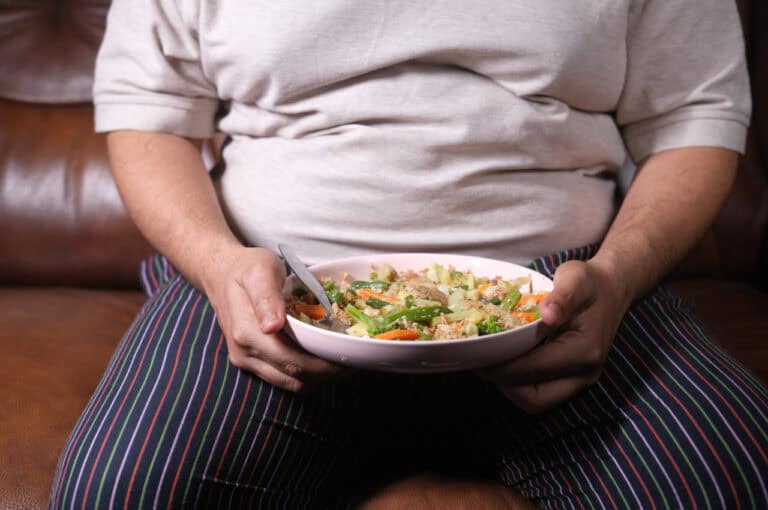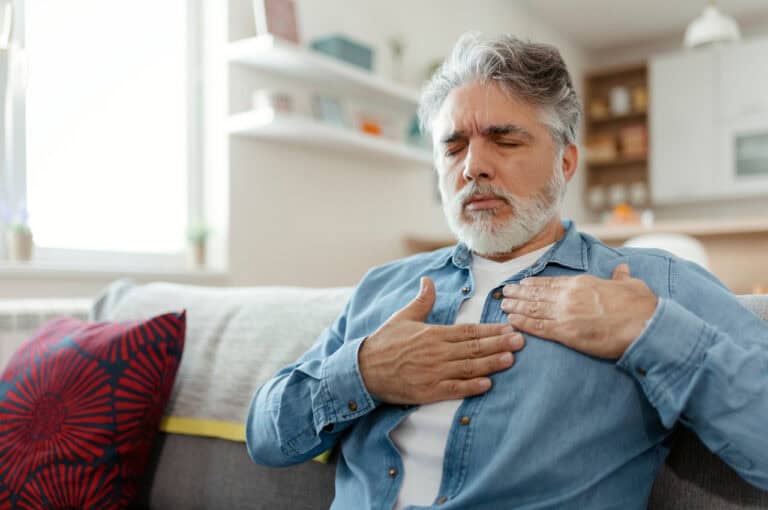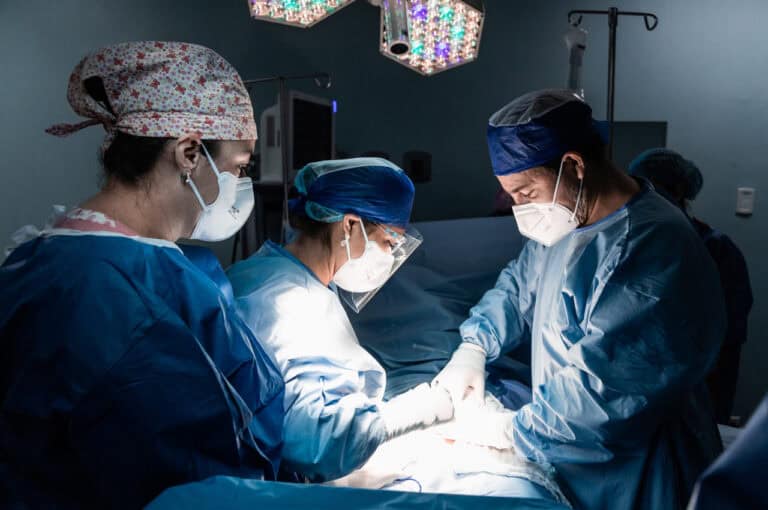If you have noticed changes in your chest shape or tissue while struggling with weight gain, you might be considering gynecomastia. Many men who visit the San Antonio Gynecomastia Center are surprised to learn that extra weight can impact their chest in unexpected ways.
Understanding the link between being overweight and the development of enlarged male breast tissue, or gynecomastia, is crucial. When you know what is actually going on in your body, you have the power to improve your appearance, health, and confidence. Let’s look at how weight, hormones, and true gynecomastia connect, and what you can do about it.
Key Takeaways
- Obesity and Hormones: Weight gain can lead to hormonal shifts that sometimes increase breast tissue in men.
- Fat vs. Glandular Tissue: Not all chest enlargement is true gynecomastia, excess chest fat and glandular growth are different.
- Identifying Gynecomastia: Patients often notice symptoms like breast tenderness or a firm mass beneath the nipple.
- Health Impact: Gynecomastia can affect self-esteem and signal underlying medical issues that should be addressed.
- Treatment Options: Both weight loss and surgical solutions, like male breast reduction, may be recommended.
- Recovery Process: Surgery for gynecomastia usually offers a boost in confidence and a straightforward recovery process.

How Extra Weight Affects Male Chest Appearance
You may notice changes in your chest when you gain weight. Extra fat can collect in various places, but the chest area often causes the most concern for men.
When the chest looks more prominent, it is easy to assume you have gynecomastia. However, there are two main reasons your chest may look puffy or rounded.
Fat Deposits versus Glandular Enlargement
The male chest contains both fat and glandular breast tissue. Weight gain increases the fat component, especially in areas where your body is genetically prone to store it.
Some men develop simple “pseudogynecomastia,” where soft fat builds up without significant hormonal change. Others experience glandular tissue growth, a hallmark of true gynecomastia.
Visibly Distinguishing the Difference
It can be difficult to tell whether breast enlargement is due to fat or actual breast gland growth. Pseudogynecomastia feels soft, and the tissue is spread out. In contrast, gynecomastia includes a firmer disc of tissue under the nipple and areola.
Doctors at our San Antonio office often perform a physical exam and may order tests to distinguish between these two causes. Understanding which you have will guide your treatment plan. You can take our gynecomastia quiz to find out if you are a good candidate for a consult.
The Science Behind Gynecomastia and Weight Gain
The connection between body weight and gynecomastia is more than cosmetic. Internal hormone changes play a significant role.
When you are overweight, body fat does more than just add bulk. It actively influences your hormones in ways that may promote male breast tissue growth.
How Hormones Change with Weight
Excess fat contains an enzyme called aromatase. Aromatase converts androgens, like testosterone, into estrogens, which are traditionally “female” hormones.
As estrogen levels rise, breast gland tissue can grow. Men who struggle with weight may experience this shift in hormone balance, especially if other medical conditions factor in.
Other Factors That Contribute
Being overweight increases your risk for certain health issues, like liver dysfunction and insulin resistance. These can reduce your body’s ability to clear excess hormones. Together, these effects combine to make gynecomastia more likely in men who carry extra pounds.
Symptoms: Recognizing Signs of Gynecomastia
It can be challenging for patients to tell if their chest changes are due to extra weight or true gynecomastia. However, some signs can help you decide if you should be evaluated.
Male breast enlargement can appear slowly or suddenly. The following symptoms are worth noting and discussing with a doctor.
Signs That Suggest True Gynecomastia
Some features set gynecomastia apart from simple fat deposits:
- Breast tenderness or pain that develops over time.
- A firm, rubbery mass directly beneath the nipple area.
- Puffiness or protrusion of the nipple-areolar complex.
- Asymmetry or different degrees of enlargement on each side.
- Swelling that does not improve, even after attempting weight loss.
If you recognize one or more of these in your own body, you may benefit from a professional gynecomastia evaluation.
Causes of Gynecomastia: Obesity and Beyond
Multiple factors can lead to gynecomastia. Being overweight is just one part of a larger picture.
You will gain a clearer understanding of your own risks when you consider these common causes.
Major Contributors to Gynecomastia
Let’s look at how different sources contribute to male breast gland growth.
- Hormonal Imbalance: The most common cause for all men is a shift in the ratio of estrogen to testosterone. Fat tissue amplifies this effect.
- Medications: Some drugs, including certain anti-androgens, anabolic steroids, and psychiatric medications, can trigger gynecomastia.
- Medical Conditions: Diseases of the liver, kidneys, or thyroid may play a role due to their effect on hormone processing.
- Aging: Older men often develop gynecomastia because natural testosterone drops with age.
- Puberty: Adolescent boys may experience temporary gynecomastia as their hormones fluctuate, but this often resolves over time.
Knowing what is behind your symptoms is essential for choosing the most effective treatment plan. If you want to find out more about the root of this condition, explore the gynecomastia causes page.
Diagnosing Gynecomastia in Overweight Men
Arriving at a clear diagnosis is the first step to restoring your confidence. At our practice, we help patients distinguish between excess fat and true glandular enlargement using several methods.
The Physical Exam
During an initial evaluation, our doctor will review your medical history and perform a thorough chest exam. We look for size, shape, and the character of the tissue.
Feeling a firm disc under the areola is classic for gynecomastia. Soft, diffuse fullness is more typical of pseudogynecomastia due to fat.
Imaging and Lab Tests
In some cases, testing is helpful. An ultrasound or mammogram can clarify what kind of tissue you have, and we can identify your grade of gynecomastia. Simple blood tests can check your hormone levels and screen for underlying conditions.
With all this information, we will be able to determine the best path forward.

Psychological and Social Effects
Gynecomastia affects more than your body. Many patients struggle with self-confidence and social comfort because of changes in their chest.
Emotional Impact
You may feel embarrassed to remove your shirt, avoid physical activities, or worry about unwanted attention. These concerns are very common in both overweight and average-weight men with gynecomastia.
At San Antonio Gynecomastia Center, we take the emotional side of treatment seriously. Restoring your confidence is one of our primary goals.
Mental Health and Quality of Life
Studies show that gynecomastia is connected to lower self-esteem and a reduced quality of life for both teens and adults. Addressing the underlying cause and learning about your options can make a significant difference for your mental well-being.
Treatment Options for Gynecomastia in Overweight Men
Managing gynecomastia begins with understanding your options. Every case is unique, and the ideal solution may differ from one patient to another.
Below are the most common treatments our San Antonio patients explore.
Weight Loss and Lifestyle Changes
If your chest enlargement is mostly due to excess fat, significant weight loss can sometimes improve the appearance. Eating a balanced diet, exercising regularly, and addressing any metabolic or hormonal issues can all make a difference.
However, once true glandular tissue has formed, it rarely disappears with weight loss alone. Even after losing weight, the gland may leave a persistent “button” or puffy area beneath the nipple, and you can experience post-weight-loss gynecomastia.
Medications
In rare cases, and only in early stages, adjusting or stopping certain medications can reverse mild gynecomastia. Prescription drugs that address hormonal imbalances are not effective for most adult men.
Surgical Male Breast Reduction
Surgical treatment remains the most effective solution for true gynecomastia that does not respond to weight loss or medication changes. At our San Antonio center, we typically use one or both of the following approaches:
- Liposuction to remove excess fat deposits around the chest.
- Direct excision to remove firm glandular tissue, usually through a small incision around the areola.
Many patients benefit from a combination of both methods for a smooth, natural contour.
Recovery and Results
Most gynecomastia surgeries are outpatient procedures. Recovery is straightforward, with swelling and mild discomfort resolving within a week or two.
Patients often notice an immediate contour improvement. The final results continue to refine as the tissue heals in the weeks after surgery. You can find patients’ results in our gynecomastia before-and-after gallery.

Preventing Gynecomastia Linked to Weight
Taking proactive steps reduces your risk of developing gynecomastia, especially if you are aware of your body’s tendency to store fat in the chest.
Below are some actions you can take to reduce your risk over time. While these steps are not always a guarantee, they can go a long way in supporting your health.
- Maintain a Healthy Weight: Focus on gradual, sustainable weight management to keep fat and estrogen production in check.
- Review Medications: Discuss with your doctor if any prescriptions you take might have side effects related to hormones.
- Limit Alcohol Intake: Excessive alcohol can strain your liver and alter hormone breakdown.
- Exercise Regularly: Strength training and cardio both support hormone balance and overall body composition.
- Monitor Health Conditions: Keep chronic health concerns, like diabetes or thyroid disorders, well managed with your doctor’s help.
Adopting these habits helps you build a strong foundation for both breast and overall health. If gynecomastia still develops, early recognition makes treatment much easier.
When to Consider Surgery
Some men wonder when surgery is truly necessary. You should consider surgical treatment for gynecomastia if:
- Your chest contour causes lasting embarrassment or changes how you dress and behave.
- The condition does not improve after weight loss or lifestyle changes.
- You experience discomfort, pain, or emotional distress related to your chest appearance.
At the San Antonio Gynecomastia Center, we help you weigh the pros and cons to make a confident decision.
Looking Ahead: Taking the Next Step for Gynecomastia Care
Being overweight can sometimes trigger or exaggerate gynecomastia, but every patient’s situation is unique. Understanding the difference between excess fat and true glandular growth is essential as you plan your next steps.
Fortunately, both non-surgical and surgical options can deliver lasting improvement in appearance and self-esteem. Whether you are starting a weight loss journey, curious about medication effects, or considering surgery, there is a clear path forward.
If you are bothered by the look or feel of your chest, we can help. Reach out to San Antonio Gynecomastia Center to schedule a gynecomastia evaluation and get answers tailored to your needs. Your confidence and health matter, and our team is ready to help you reclaim both.







